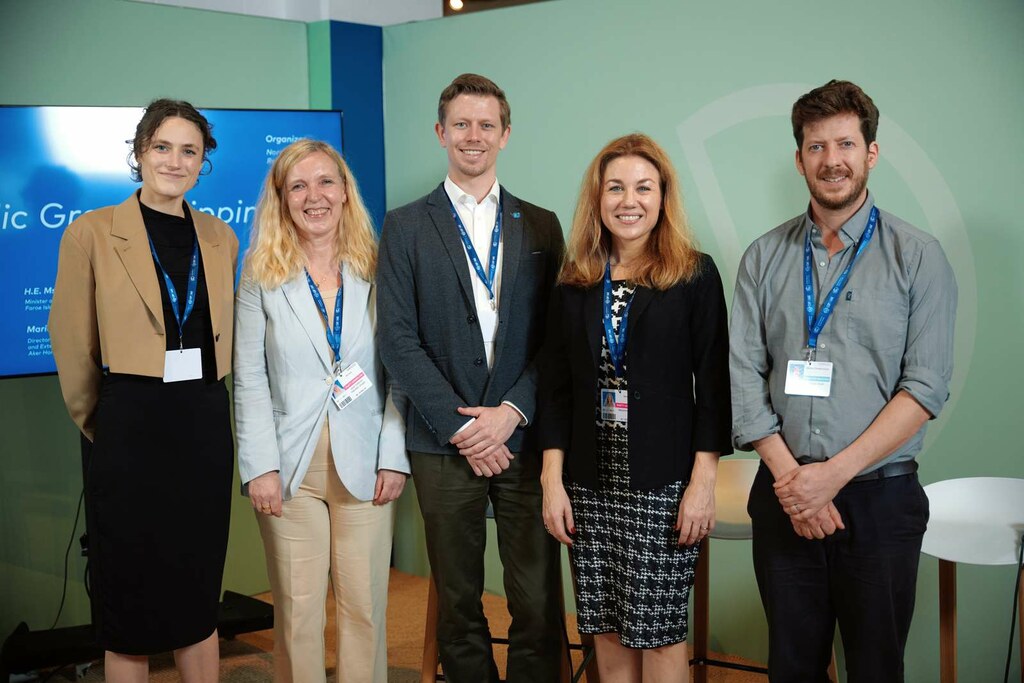
Ambitious targets and best practices in focus for maritime sector session
The maritime transport sector plays an essential role in the EU and Nordic economies and is one of the most energy-efficient modes of transport, but it is also a large…
The maritime transport sector plays an essential role in the EU and Nordic economies and is one of the most energy-efficient modes of transport, but it is also a large and growing source of greenhouse gas emissions. The green transition of the sector is essential for the Nordics to reach the 2050 climate goals, and at the COP28 session “Nordic Green Shipping” Nordic Energy Research gathered experts from politics, academia and business to discuss what needs to be done and current initiatives to speed up progress.
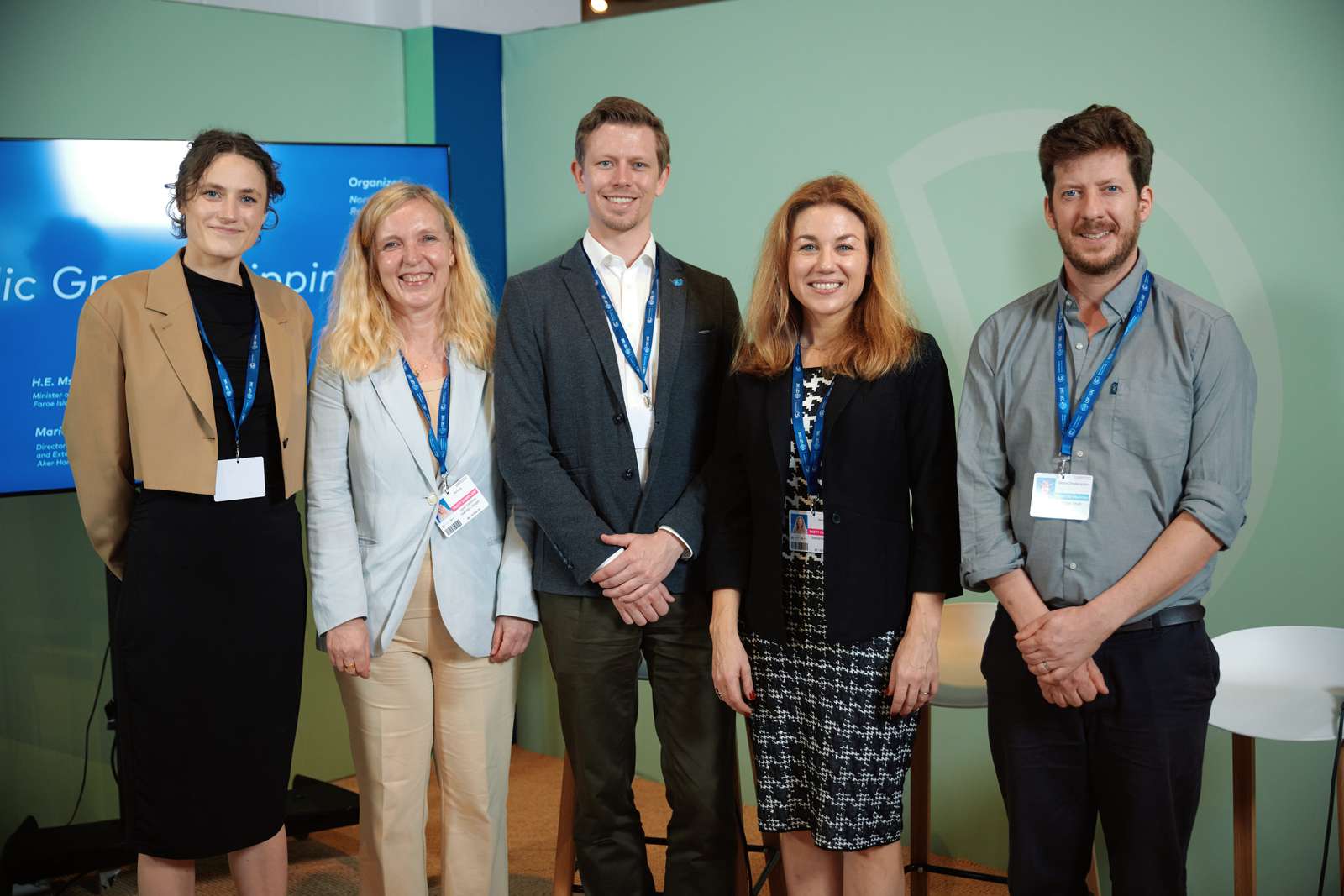
Speakers at the event: H.E. Ms. Ingilín D. Strøm, Minister of the Environment, Faroe Islands, Jane Jünger, Wärtsilä, Kevin Johnsen, COO, Nordic Energy Research (moderator), Marianne Stigset, Director of Communications and External Affairs, Aker Horizons and Tristan Smith, Associate Professor at UCL Energy Institute.
The average ship needs to reduce its emission by 90 percent till 2040
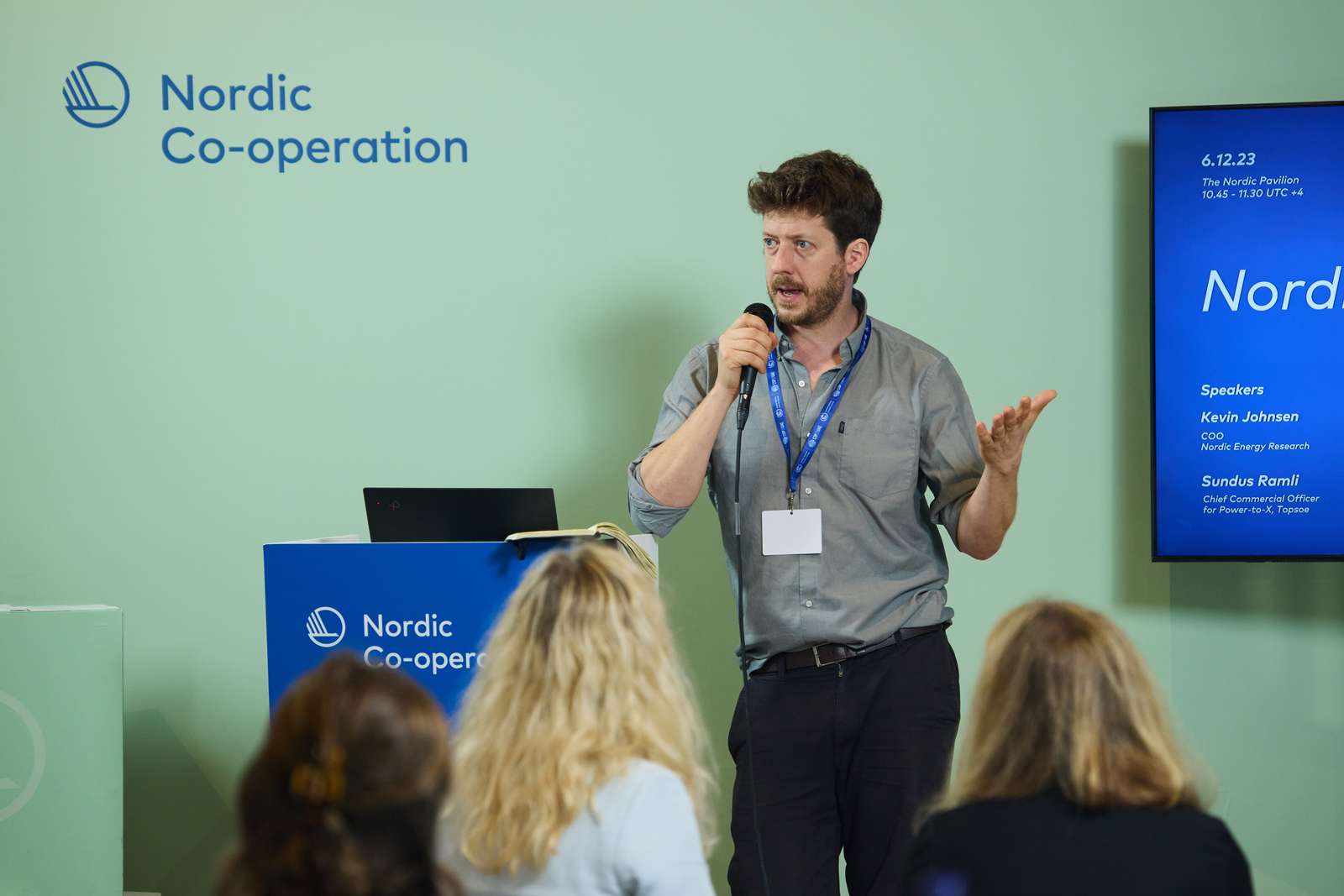
Tristan Smith, Associate Professor at UCL Energy Institute.
Starting out with an introduction to IMO, Tristan Smith, Associate Professor at UCL Energy Institute, explained the work they do with countries, informing them about different policies impacting green house emissions. In July, the revised strategy on greenhouse gas reductions, which the institute was closely involved in, was adopted. Smith highlighted three parts of the revised strategy that are of particular interest:
- The interim targets for 2030 and 2040. These targets describe an absolute reduction of 20-30 percent of greenhouse gas emissions in 2030 and an absolute reduction of 70-80 percent in 2040.
- The only viable solution is green hydrogen. To reach the targets for 2030 and 2040 the average ship needs to do a near 60 percent reduction of greenhouse gas intensity reduction until 2030 and a 90 percent reduction until 2040. Given the time frame, the only viable solution is green hydrogen.
- Clear language drives investments at sea and on land. The language of the report is unambigious; it’s not only about what happens at sea but also about what happens on land. This clarity is important because it drives an investment case on land, not just on technologies that are used on board.
Faroe Islands: ambitious but neccessary targets
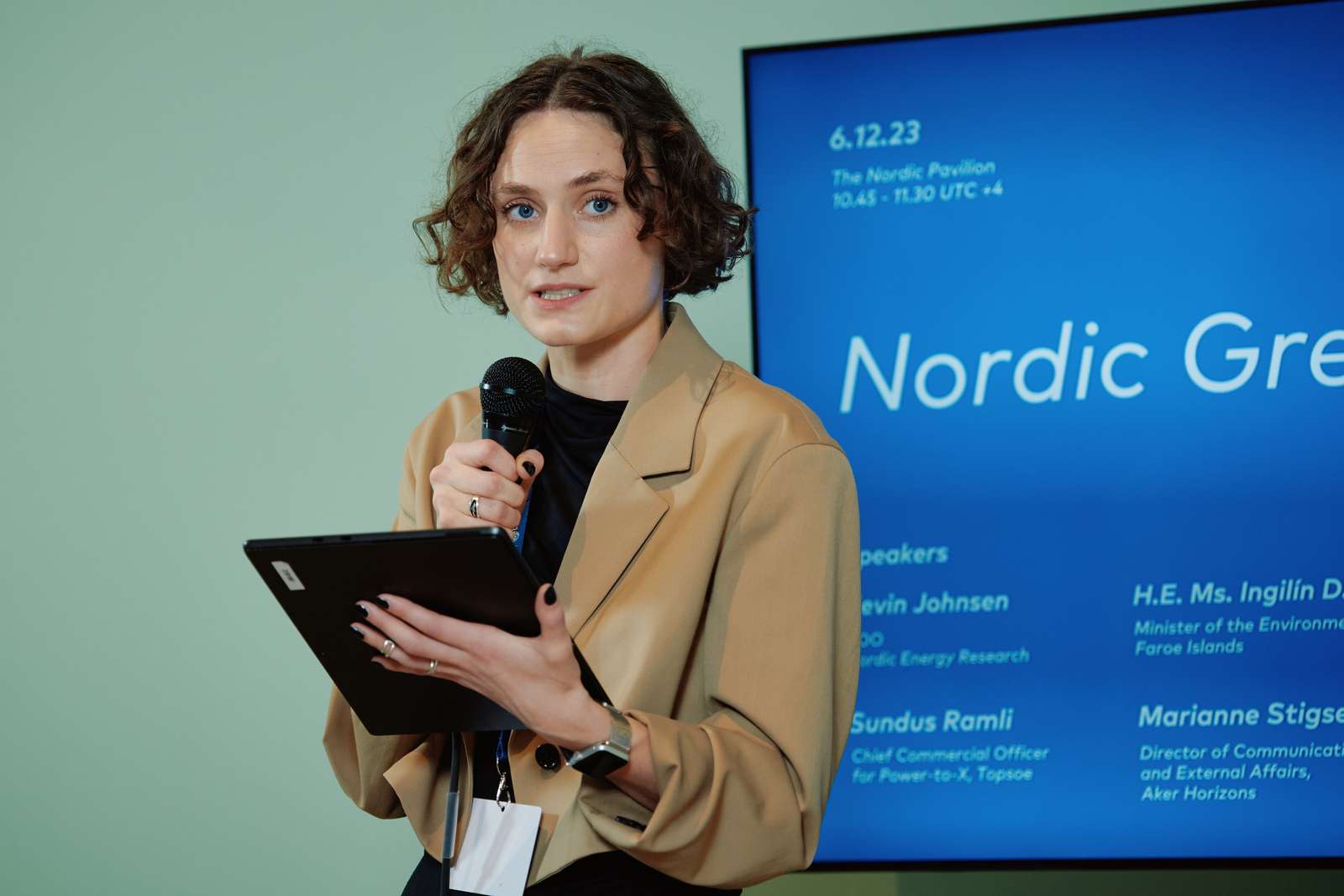
H.E. Ms. Ingilín D. Strøm, Minister of the Environment, Faroe Islands.
The Faroe Islands have a target to reduce their CO2 emissions by 45 percent compared to 2010 levels, said H.E. Ms. Ingilín D. Strøm, Minister of the Environment, when she opened her speech. This target reflects the urgency of addressing our carbon footprint, especially considering that our current per capita emissions exceed 20 tonnes per year, she continued. The Faroe Islands have currently addressed half of their oil consumption, and the electrification of heating, transport, and industry is ongoing. The adoption of electric cars has had a transformative impact, marking 2021 as the year of peak oil.
The maritime sector is responsible for half of the Faroese emissions and is thereby essential to address in order to meet the 2030 target. Strøm said that a reduction in oil consumption must be done without delay, and the actors in the sector are already aligning their strategies in order to meet this goal. She also said that international and Nordic cooperation is essential, exemplified by the first electric service vessel for salmon farming recently deployed.
Business initiatives demonstrate hydrogen possibilities
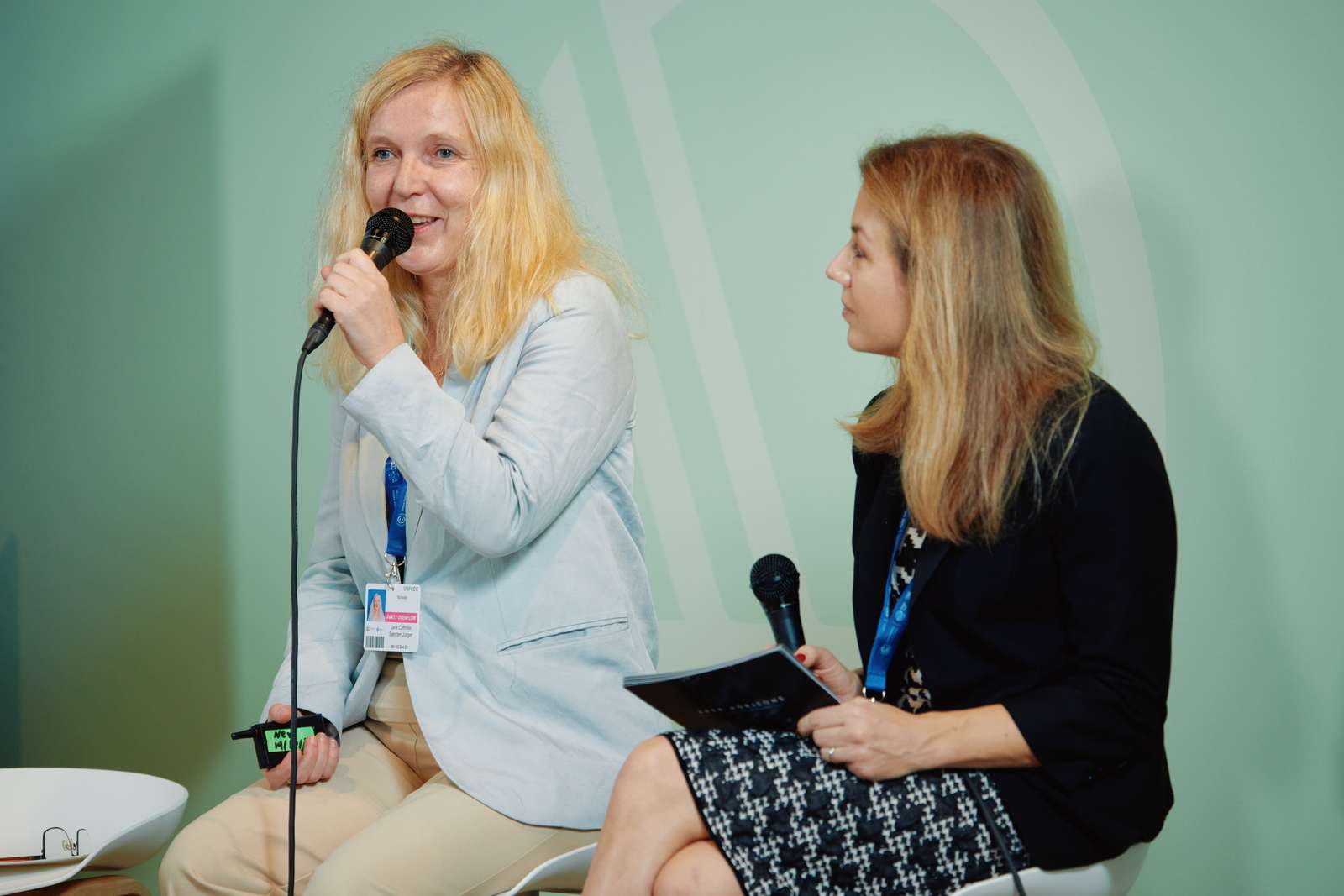
Jane Jünger, Wärtsilä, and Marianne Stigset, Director of Communications and External Affairs, Aker Horizons.
For a deep dive into some of the current business initiatives on hydrogen in the maritime sector, moderator Kevin Johnsen invited Marianne Stigset, Director of Communications and External Affairs, Aker Horizons and Jane Jünger, Wärtsilä, on stage.
Jünger presented the ZEEDSArctic initiative that started in 2019 with several big Nordic companies participating. The initiative’s focus is future fuels like green ammonia to enable the goal of reducing emissions from transportation by 70 percent by 2030, by establishing a green corridor in Berlevåg. This includes a regional ecosystem with an ammonia factory, the ships M/S Ammonia that transport the ammonia to remote arctic locations. Wärtsilä’s part in the joint work was, among other things, to deliver the combustion technology to burn the green ammonia and just two weeks ago (late November 2023) they launched the first commercial ammonia engine.
“With four projects under development in Norway today, focusing on both blue and green hydrogen, Aker Horizons aims to contribute to the decarbonization of the hard-to-abate sectors such as cement, steel, transportation, and maritime,” said Marianne Stigset as she continued, putting focus on two particular projects, Nordic Green Ammonia and the one in Berlevåg that they do together with Wärtsilä and other partners. In Nordic Green Ammonia, Aker Horizons is developing a 600 MW green ammonia plant together with Statkraft in the north of Norway. The plant is estimated to produce 400.000 metric tonnes per year by 2028. This will be one of Europe’s first large-scale green ammonia plant. The next step for the project is to reach a final investment decision in 2025. To date, the project has signed letters of intent with several major European energy, industrial and chemical companies for over three times the planned production.

